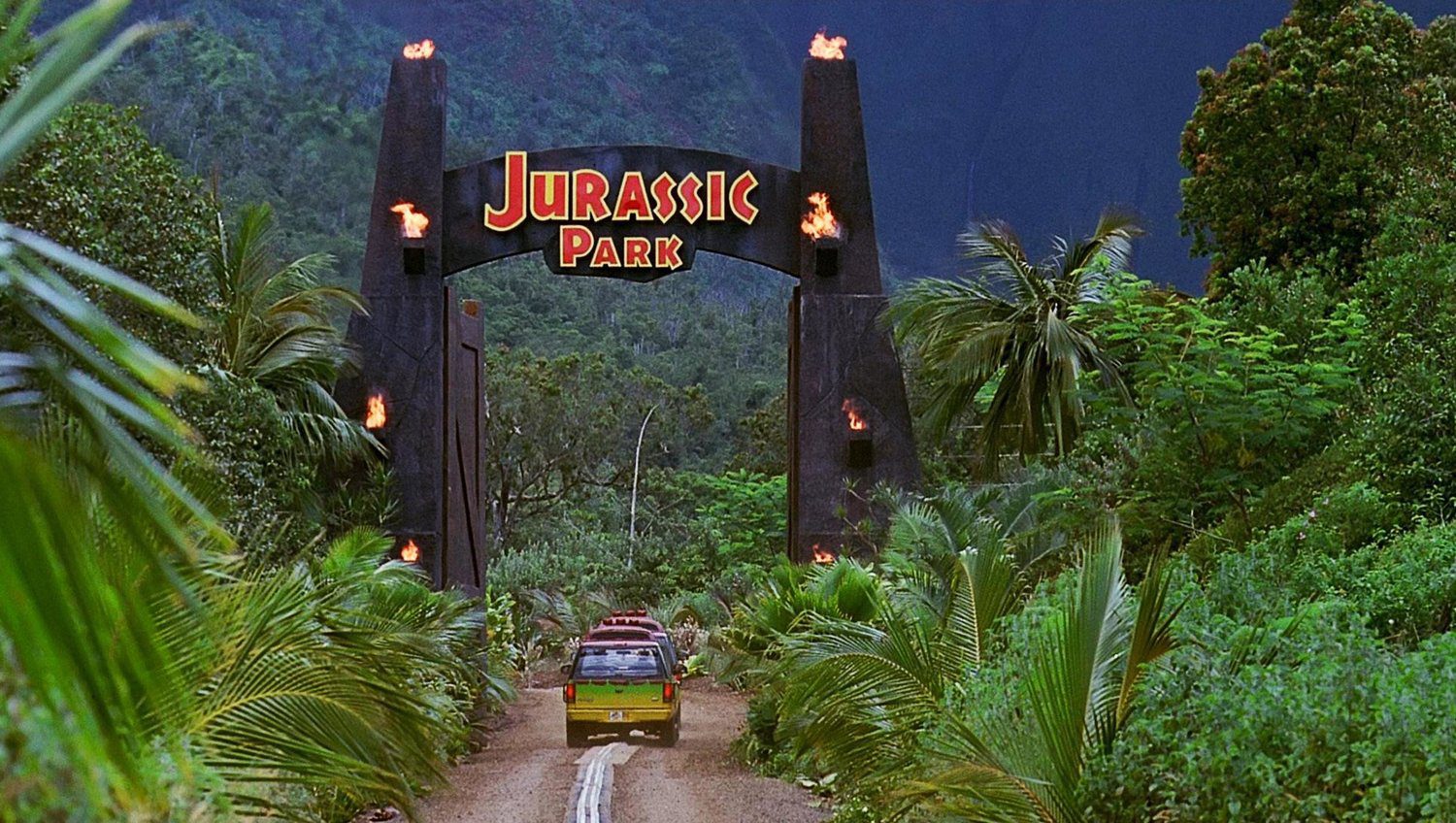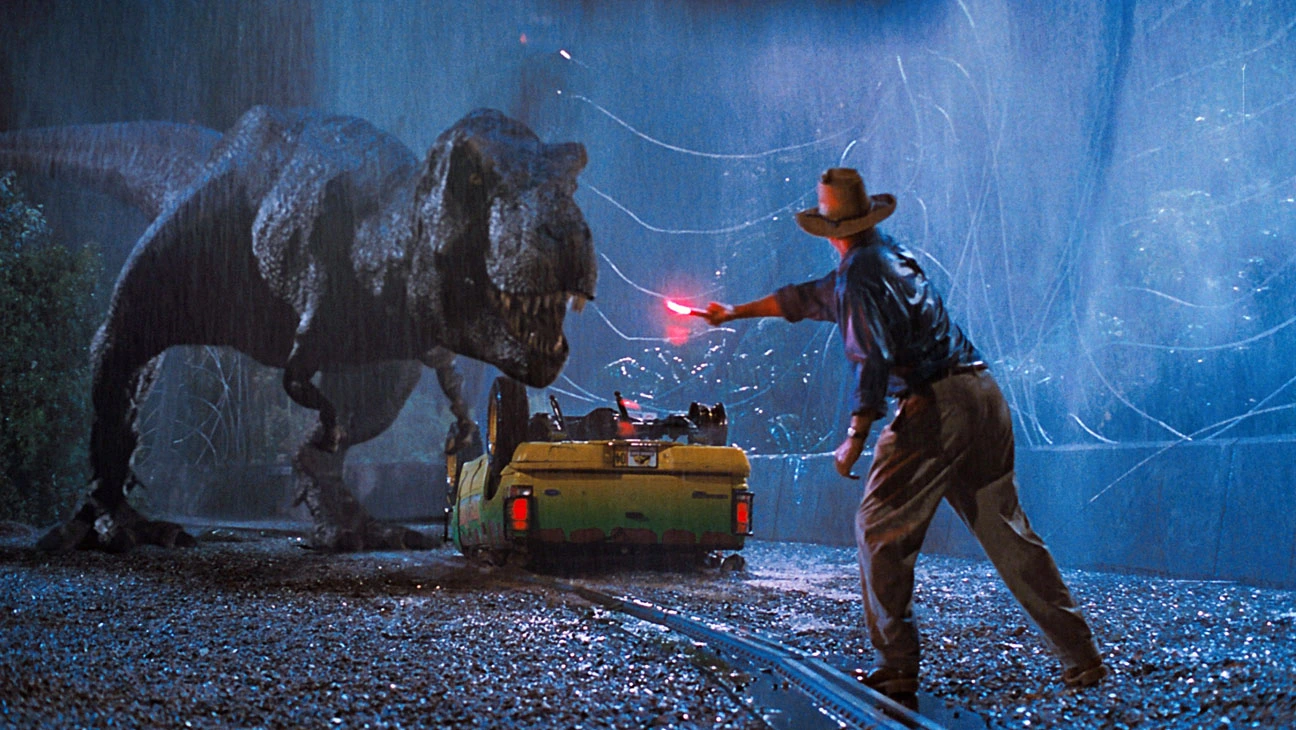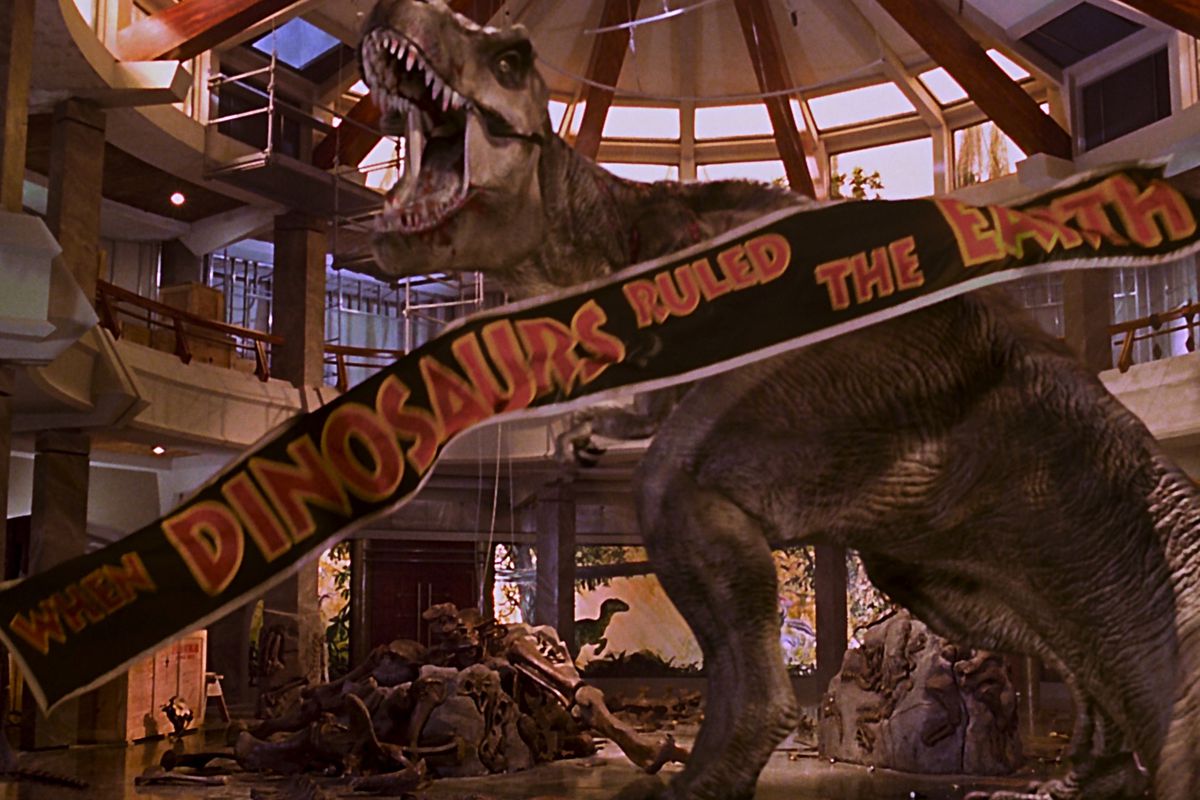By Ben Dower

In 1854, sculptures of prehistoric creatures, including a handful of dinosaurs, were put on public display at a relocated Crystal Palace in London, England. Built by Benjamin Waterhouse Hawkins under the guidance of naturalist Sir Richard Owen, these statues were the first major visual representation of living dinosaurs the public had access to. Though considered very inaccurate today, these statues helped cement dinosaurs into the public?s imagination.
Dinosaurs were again brought to life in the early years of film, with the short cartoon Gertie the Dinosaur (1914) and film adaptation of Sir Arthur Conan Doyle?s The Lost World (1925). Dinosaurs have been a mainstay of film ever since, though special effects crews often struggled to make them look believable on screen. That all changed in 1993 when Steven Spielberg?s film adaptation of Michael Crichton?s novel Jurassic Park hit screens and blew audiences away.
Though Jurassic Park is remembered for its ground-breaking use of CGI, much of the dinosaur screen time in the movie is comprised of practical effects created by Stan Winston and his team. Every dinosaur in the film, except for two, is brought to life using practical effects in whole or in part. Even the giant Tyrannosaurus rex had a full-sized animatronic built, which was used for a good portion of the scene where the dinosaur escapes its paddock and attacks the tour vehicle.

While other films had used CGI for special effects sequences in the past, Jurassic Park was one of the first movies to rely so heavily on CGI to create photo-realistic animals. Two dinosaur species in the film, Parasaurolophus and Gallimimus, are even portrayed entirely using CGI. With Jurassic Park, Dennis Muren and his team at Industrial Light & Magic proved the capability of CGI to create convincing visual effects. In the years after Jurassic Park?s release CGI was increasingly used by filmmakers, with CGI-heavy movies like The Lost World: Jurassic Park (1997), Godzilla (1998), The Matrix (1999), and The Lord of the Rings: The Fellowship of the Ring (2001) all hitting theatres less than a decade after the release of Jurassic Park.
What also helps Jurassic Park rise above the average blockbuster is its cast of likeable characters. Dr. Alan Grant is relatable in his desire to remain in his comfort zone, which is in the field and far away from children. Dr. Ellie Sattler, his paleobotonist girlfriend, is a strong female character who risks her life to get the electricity working on Isla Nublar so that the mainland can be contacted to send a rescue helicopter. Even Dennis Nedry, the greedy IT worker who puts everyone in danger amid his failed effort at corporate espionage, is a fun and distinct character with memorable lines. Lex and Tim Murphy avoid being annoying child characters, with Lex also playing a key role in saving the survivors by getting the computer system up and running again.

But it is perhaps Jeff Goldblum?s portrayal of Dr. Ian Malcolm that audiences liked the best. Malcolm leads the charge against John Hammond?s dangerous use of science for profit, and does it with a bit of humour sprinkled in. He also manages to state the core themes of the film in a way that feels natural within the movie. Malcolm proved to be so popular that he was brought back for the film?s sequel, The Lost World: Jurassic Park, a move which required Michael Crichton to do some retconning in his The Lost World novel.
Jurassic Park explores the implications of genetic engineering and questions what we should do with the power it grants us. By the time of the novel?s release in 1990, it was clear genetic engineering was rapidly progressing, and with the power to alter, design, or clone living things comes tough ethical questions, some of which may clash with the interests of corporations and the wealthy. Jurassic Park portrays a scenario where extinct animals are resurrected for entertainment and profit, and while it is highly unlikely we?ll ever be able to clone a dinosaur, it may be possible to clone more recently extinct animals. In 1996, just three years after the release of Jurassic Park?s film adaptation, a cloned sheep named Dolly was born. Going forward, the questions Jurassic Park raises about bring extinct animals back to life may very well move from science fiction to scientific fact.
Jurassic Park was hugely important in popularizing the discoveries made in the Dinosaur Renaissance. Initially, dinosaurs were thought to be sluggish and stupid tail-dragging reptiles. In the 1960s, research by scientists like John Ostrom revolutionized our understanding of dinosaurs by demonstrating their relationship with birds and that they were adapted to being as fast moving and intelligent as animals are today. This new view of dinosaurs took a long time to pierce public consciousness, but Jurassic Park put it into a format that the public could easily consume, thereby helping break stereotypes that had been around since the sculptures at Crystal Palace were first revealed in 1854.

Unfortunately, some of the artistic liberties taken by the film have been accepted by much of the public as fact as well. Perhaps the most inaccurately portrayed dinosaur in the movie is Dilophosaurus, which is shown as a small animal that spits venom and has a neck frill. To make matters worse, this design has been copied by many others since the film?s release. Dilophosaurus did not actually have a neck frill, there is no evidence it spit venom, and it was about seven metres long. Also, the Velociraptors in the movie are actually oversized Deinonychus antirrhopus, rather than the smaller desert dwelling Velociraptor mongoliensis. It is now known that Deinonychus and Velociraptor were both fully feathered, though that was still up for debate at the time Jurassic Park was made and probably too difficult to portray using CGI in 1993.
Minor gripes about dinosaur accuracy aside, Jurassic Park is a fantastic film, and I?d say it is arguably one of the best films ever made. It launched a wave of dinosaur mania in the years immediately following its release, with a great line of toys by Kenner, dinosaur documentaries like the Paleoworld series, and a bunch of other dinosaur-related media, merchandise, and events.
If you haven?t seen Jurassic Park by now, you need to do so as soon as possible.


